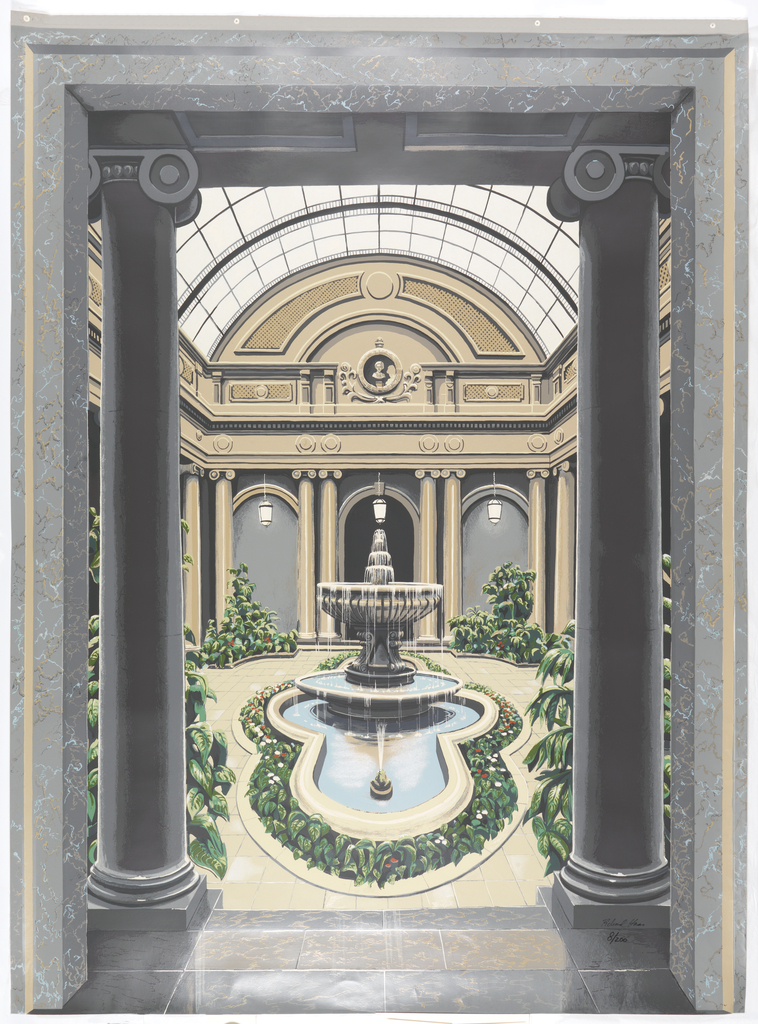Garden Court is one of the largest screen-printed wallcoverings in the Museum’s collection, and is said to be the “largest silk screen ever printed in one piece.” Because of its large size, measuring 8×6 feet, the printing necessitated a special rag paper, with a single sheet for each print. The print run was limited to 200 prints, plus 20 artists’ proofs. The large size of the print, and the fact that it was printed with 20 screens creating more than 40 colors and half tones, creates a wonderful trompe l’oeil effect, and gives one the feeling they can step right in to the courtyard. It recreates the experience of wandering through the Frick mansion and just happening upon the door to the courtyard. It makes one pause, and then the sense of calm and beauty draws one in. The courtyard view is a variation on the Frick courtyard, a place described by Haas as “one of the most comfortable and tranquil in the city.”(i) The screen-printed Garden Court bears amazing likeness to the Frick courtyard down to the smallest detail, from the pattern in the glass overhead, to the architectural details, to the frog sculptures spitting into the pond.
Garden Court fits in the Museum’s collection of scenic wallpapers and murals, which date from the early 19th century to the present. Haas’s Garden Court offers a more contemporary take on this genre, showing a very focused view of an existing building. This print does not join up with other views as is typical of scenic and mural designs but forms a complete view on its own. Cooper-Hewitt's collection contains only one other screen-printed mural.
Richard Haas is a painter, printmaker and muralist who developed a fondness for works of architecture of the 19th and 20th centuries. The scale of his artworks ranges from small prints to large murals on public buildings.
(i) The New York Times, "A Courtyard of Your Own", March 15, 1979, pg. C14, illustrated article.
